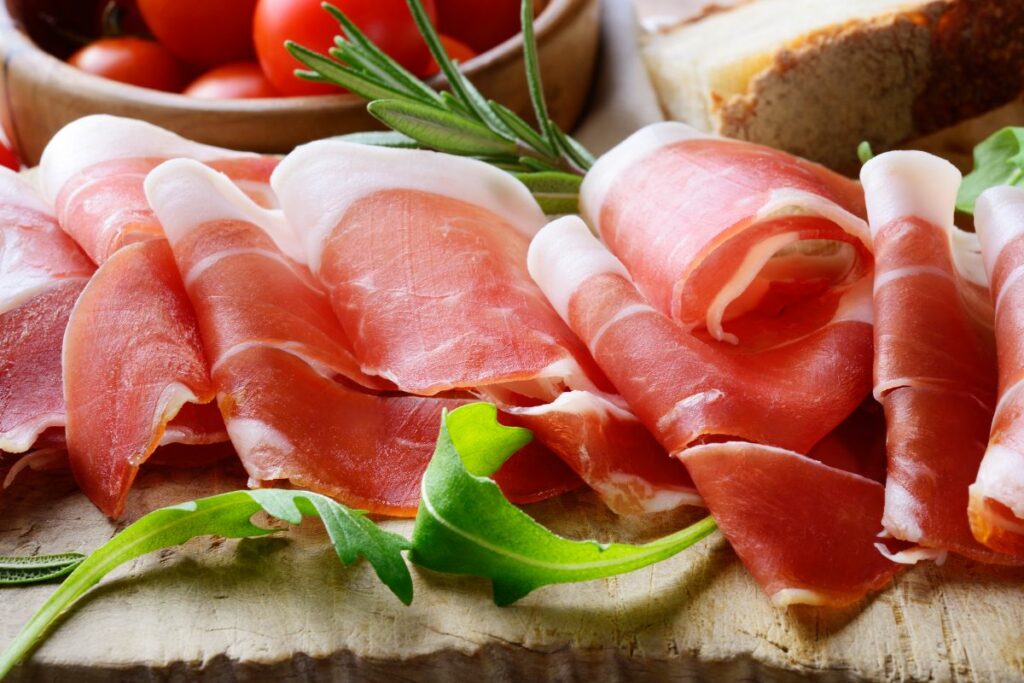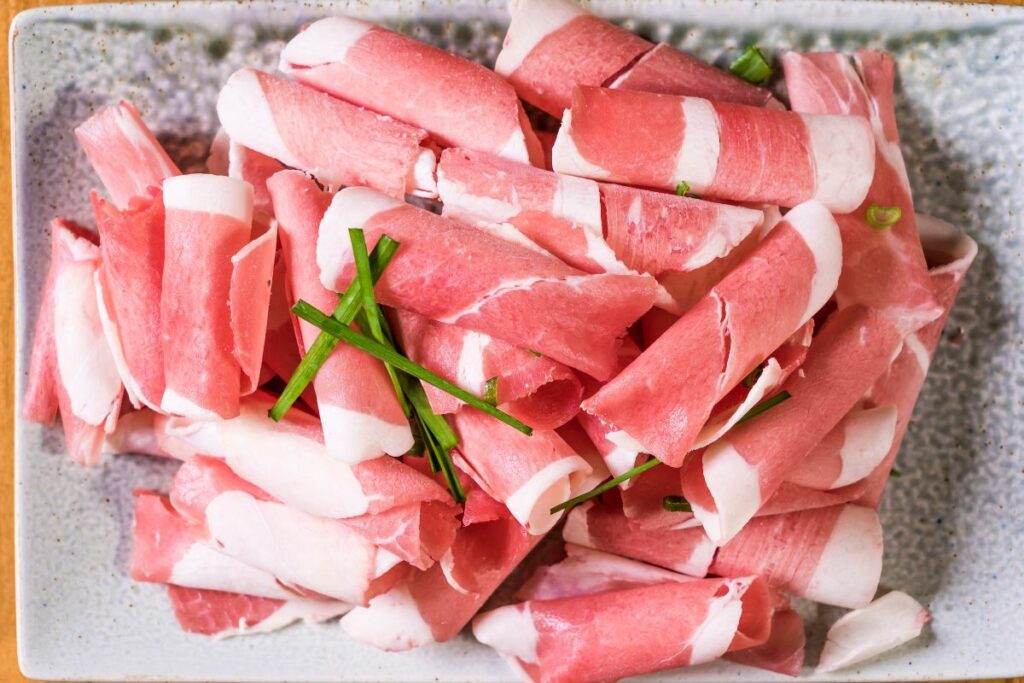You might have eaten this kind of meat, but you might not be aware of what it is called or how it is made. You can either get prosciutto fresh from the butcher or you can buy it vacuum-packed from the supermarket. But how is it made?

Prosciutto is made from the hind legs of pigs and is dried using a special curing process. There are 2 types of prosciutto, cooked and uncooked, prosciutto cotto and prosciutto crudo respectively.
This meat is made with painstaking accuracy, made with specially bred pigs, sea salt, and a little bit of patience.
But what does prosciutto taste like? Is prosciutto better cooked or uncooked? What meals feature prosciutto as the main ingredient? Well, we have all the information on this meat that you could ever need, along with some nutrition facts and recipe ideas.
What Is Prosciutto Used For?
This is a meat that is cured using salt, meaning that it can be preserved for longer and has a unique taste. It is often cut into thin slices and can either be served as an appetizer on its own or laid on top of a salad.
This meat is cured with salt for around 15 to 18 days at refrigerated temperatures (around 34 – 39 degrees). Once it has been at this temperature for a week, it is taken out and given another coating of salt.
Once this has been completed, the leg is then washed to remove any excess salt. It is then placed in the drying room, which has a very specific temperature and humidity.
It is dried for around 3 months, at which point all moisture has been removed from the ham.
The great thing about this curing process is the fact that there are no artificial ingredients or chemicals used in its production. This is ideal if you want a slice of meat that is made using traditional methods.
What Types Of Prosciutto Are There?
When you are shopping for Prosciutto in the supermarket, you might be confused about the various names that it has. There are a few cured meats that you can buy including prosciutto and bacon, but what exactly are the differences?
Here’s a brief guide:
- Bacon – this is a common type of meat that you might find at your local store. It is cured and very salty, but you will need to cook it before eating.
- Pancetta – This is taken from the pork belly, and in much the same way as bacon, it needs to be cooked before consumption.
- Speck – this is another meat made from the hind legs of a pig. You can eat it cooked or uncooked.
- Prosciutto Di Parma – This is cured ham that features no artificial ingredients whatsoever. It comes with no gluten or coloring agents.
- Prosciutto Variants – There are other types of prosciutto that have different flavors depending on where they are cured. This includes American prosciutto, Spanish Jamón, prosciutto di San Daniele and prosciutto Toscano from Italy.
Some of these flavors will be different from others, depending on where your prosciutto is cured and the process that it goes through.
What Are The Nutritional Benefits Of Prosciutto?

Being a meat, prosciutto is very high in protein. This is great if you want a tasty snack that will also help you to build muscle. It also comes brimming with vitamins and nutrients that you won’t be able to get from any other food.
Here is the nutritional profile for prosciutto:
- Prosciutto (1 ounce)
- Calories: 60
- Total fat: 3.5 g
- Saturated fat: 1.5 g
- Cholesterol: 19.9 mg
- Sodium: 520 mg
- Total carbs: 0 g
- Dietary fiber: 0 g
- Sugar: 0 g
- Protein: 7 g
- Riboflavin (B2): 12% DV
- Vitamin B12: 10% DV
- Phosphorus: 7% DV
- Niacin (B3): 7% DV
- Zinc: 7% DV
- Vitamin B6: 7% DV
- Choline: 5% DV
Here is more of a breakdown of the nutrients that prosciutto provides for you:
Protein
2 ounces of this protein contains around 7 pounds of protein, which is quite a lot for the weight of the meat itself. This is also very high in flavor, which makes it much easier to add more protein to your salad meals.
Protein helps the body protect itself against diseases and with muscle repair. Prosciutto has a higher protein count than Italian meats such as pastrami and pepperoni.
Vitamins
This meat is very high in B vitamins, which is great for helping to fight off infection and illness. Vitamin B12 is very important for maintaining cognitive function and helps to reduce weakness and fatigue in the body.
What Recipes Are There For Prosciutto?
The great thing about this meat is that you can put it in all sorts of recipes. Whether it is a cold salad or even extra meat over your turkey dinner, this is a delicious treat for all occasions. Here are some recipe ideas for you:
Prosciutto, Kale And Butterbean Stew
This stew only takes 25 minutes to make and is an excellent winter dish. The kale and butterbeans add fiber as well as essential vitamins and nutrients. This contains a whopping 16g of protein.
Pesto With Prosciutto Dippers
This is a great snack that you can serve at your next summer buffet. You simply wrap some cold prosciutto around a stick, almost like a cold skewer. You can then whip up your own creamy pesto to create a mouth-watering side dish.
Griddled Peaches, Prosciutto, And Blue Cheese
Now we really have a dish that ticks all the boxes, being sweet, sour, and salty all in one go. If you can nail this fruity dish, we can assure you that your guests will be talking about it for months afterward.
Conclusion
Hopefully, our guide to prosciutto has helped you to decide whether you should have it for your next meal. It can be paired with a wide range of ingredients, so trawl through the internet to find your ideal flavor combination.
- How To Reheat A Cheesesteak - November 5, 2023
- What Are Three Must Have Kitchen Knives? - September 22, 2023
- How To Protect Edges Of Pie Crust - June 15, 2023








